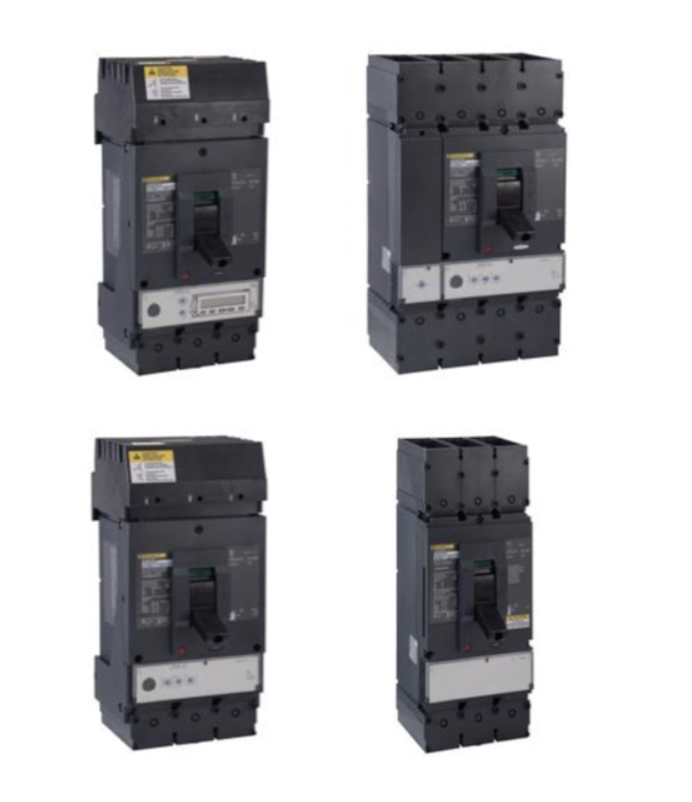L-Frame Circuit Breakers

Square D by Schneider Electric’s PowerPact Multistandard circuit breakers are equipped with dual-break rotating contacts that reduce the amount of peak current during a short-circuit fault. They feature an over-center toggle mechanism providing quick-make, quick-break operation. Internal cross-bars provide common opening and closing of all poles with a single handle. The circuit breaker handle can assume any of three positions, ON, tripped or OFF. The center tripped position provides positive visual indication that the circuit breaker has tripped.
PowerPact L-frame circuit breakers are designed with Micrologic electronic trip units. Micrologic electronic trip units provide adjustable protection settings for greater system flexibility. They allow users to monitor both power and energy. Through direct access to information and networking using open protocols, PowerPact circuit breakers with Micrologic trip units let users optimize the management of their electrical installations. Using Micrologic trip unit sensors and intelligence, PowerPact L-frame circuit breakers provide access to measurements of all the main electrical parameters on the built-in screen, on a dedicated front display module or through the communication network. Integration of measurement functions provide users with operating assistance functions including, time-stamped event tables and histories, alarms tripped by user-selected measurement values and maintenance indicators.
What is a Circuit Breaker?
There are two different types of technologies that are commonly used in circuit breakers.
Magnetic Breakers
Magnetic Breakers are designed to react to short circuits or sharp spikes in voltage and current. The more current that passes through the breaker’s electromagnet, the stronger the magnet becomes. When the current exceeds the rating for that particular breaker, the magnetic force becomes strong enough that it will pull the contact back and disconnect it from the other contact, disconnecting power from the device.
Thermal Protection Breakers
Thermal Protection Breakers protect against a sustained overcurrent, or a higher current, for a longer period of time. Thermal protection uses a Bimetal strip that will bend the contacts away from each other to disconnect power. Thermal Magnetic Breakers are the most common type of circuit breakers. They combine magnetic technology to protect against short circuits or sharp spikes and thermal technology that protects against sustained overcurrent for a long period of time.

